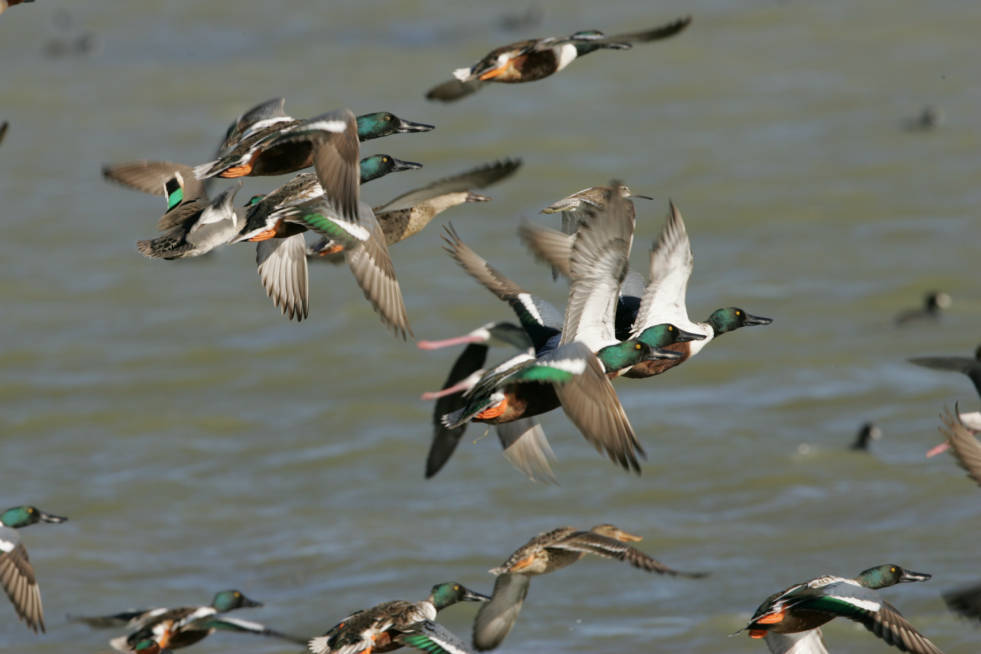New duck hunters should make list of 4 essential items

Taking up a new outdoor pursuit is both exciting and overwhelming. Exciting because it is something new — and overwhelming because each new pursuit comes with a list of equipment that will easily drain your bank account.
Take duck hunting, for instance. If you could purchase everything some folks say you need to get started, you would probably need a warehouse just to store it and a personal loan to pay for it. The key to getting started is learning what you really need before you go shopping, and then, if you like your new hobby, you can always buy more stuff.
My friend, Ruben Aquino of Las Vegas, has spent more than 25 years in the tranches of waterfowl hunting. His bird hunting adventures have taken him across the South, through the upper Midwest and right here in Southern Nevada. He says that beyond a hunting license and shotgun, which he considers to be among the obvious, there are just four things that are essential for a new duck hunter.
First on the list is a set of quality neoprene waders.
“Waders are essential. Next to the shotgun and their license, that should be their next purchase,” Aquino said. “Because the weather gets cold pretty fast around here, I recommend that people buy neoprene waders. The neoprene will keep you warmer (than breathable waders), and they’re much more versatile. You can wear them during the warmer month of October, but you are really going to need warm waders when you get into December and January.”
Failure to wear waders is perhaps the most common mistake, especially when you take into consideration the need to retrieve downed ducks from a wet environment. Since neoprene waders come in thicknesses of 3.5 and 5 millimeters, you can choose the material weight you prefer. You can always layer up as needed. Keep in mind that you get what you pay for.
Second, you are going to want a basic set of decoys.
“You don’t have to have three or four dozen decoys, but you need at least a dozen to start off with. The most common duck out there is a mallard, so having a dozen mallard decoys is going to get the job done,” Aquino said.
Keep in mind, he added, that decoys costing $30 a dozen will kill birds just as well as decoys costing $150 a dozen. One way to maximize your decoy dollar is to share the costs with a friend. Or perhaps you can buy a dozen mallards and your friend can by a dozen wigeons. Either way, don’t forget a quality decoy bag for hauling your plastic birds to and from your blind.
One way to increase the effectiveness of your decoys, if your budget allows, is to use a mechanical duck that will add movement to your decoy spread. If money is tight, you can use the old-fashioned method called a jerk cord. By connecting a cord to one or more decoys, you can use it to create movement among your decoys simply by jerking it.
Third, buy a duck call, the piece of equipment that Aquino says scares duck hunters the most.
Aquino recommends a call that produces a whistle rather than the traditional quacking sound and can be learned in a few minutes. He likes a four-way whistle produced by Primos. “A lot of the ducks on the water don’t quack. They actually whistle,” he said. “You are trying to mimic sounds that say all is well. You don’t have to be quacking away to attract ducks.”
Fourth, and often overlooked, is a shotgun sling.
“For safety purposes, and also not losing your gun, it’s important to have a sling on your shotgun. A lot of things we do in duck hunting, especially when we are going to and from the (hunting) blind, is having gear in both hands all the time. So, you got to be able to safely have that gun stowed, whether it’s over your shoulder or whatever the case may be.”
As for ammunition, Aquino recommends shells loaded with number 2 shot for ducks. Keep in mind that your shot must be non-toxic when duck hunting.
Calendar items
Online applications for Utah’s limited entry wild turkey hunt will be available Nov. 29. The application deadline is Dec. 27. Apply at https://wildlife.utah.gov
Arizona will begin taking applications for leftover spring javelina and turkey tags on Nov. 27. Tags will be awarded on a first-come basis. A list of leftover tags is available online at www.azgfd.com.
Freelance writer Doug Nielsen is a conservation educator for the Nevada Department of Wildlife. His “In the Outdoors” column, published Thursday, is not affiliated with or endorsed by the NDOW. Any opinions he states in his column are his own. Find him on Facebook at @dougwritesoutdoors. He can be reached at intheoutdoorslv@gmail.com